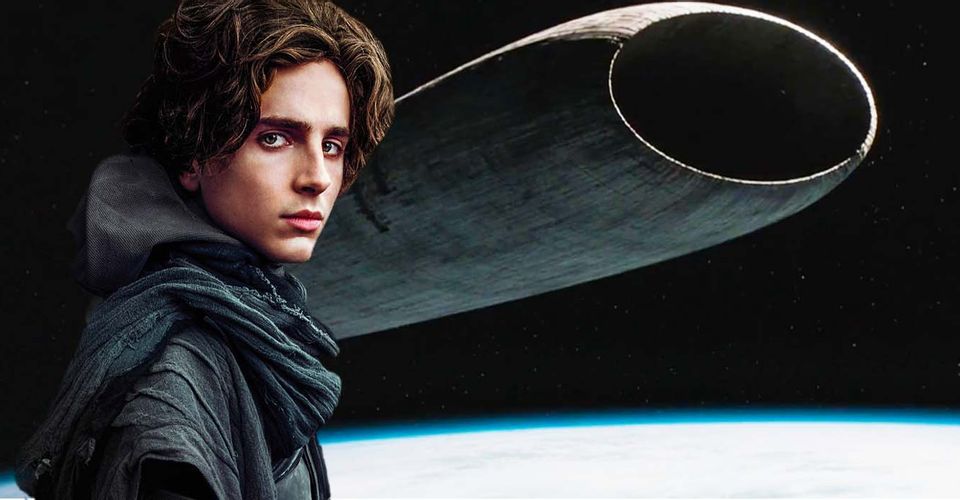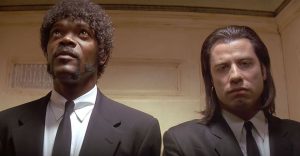Dune’s Big Spaceships Omission Shows Why Its Sci-Fi Works

The omission of many big aspects of Dune’s spaceships shows why the movie’s sci-fi works. The film follows Paul Atreides (Timothée Chalamet) and his family as they leave their home world of Caladan to take over the desert planet, Arrakis. Throughout the twists and turns of political plots and savage betrayals, Dune‘s cast of characters both employ and reference a number of different space-faring vehicles, most notable of which are the large, cylindrical ships they use to travel between planets.
In the original 1965 Dune novel by Frank Herbert, these ships are called Heighliners, and they are owned and operated by the mysterious Spacing Guild. Director Denis Villeneuve, however, chose not to portray the inside of the vessels, and he even said that the Dune movies will not show the spaceships’ interiors. It’s an interesting choice given that the insides of spaceships have become such iconic homes for the most popular sci-fi series like Star Wars and Star Trek — however, this seems to be the right move for Dune.
In fact, Dune’s omission of the spaceships’ interiors shows why its sci-fi has been so successful. Because it tells such a dense epic set in a vast and thoroughly established universe, Dune was commonly thought to be unadaptable for the big screen, but Villeneuve’s version manages to strike a healthy balance between sci-fi tropes and story elements. While it’s important to include classic sci-fi elements in a movie like Dune, Villeneuve manages to keep the focus on the aspects that are integral to developing the story and characters within the limited runtime allotted to a feature film.

Denis Villeneuve’s Dune is the first movie adaptation to truly understand which aspects of Herbert’s intricate universe matter most to the immediate story. While it’s important to have enough sci-fi tropes to attract fans of the genre who aren’t familiar with Dune, the focus really needs to remain on the key aspects of the story, if it’s to be adequately told within two movies. While the main focus of Dune doesn’t include many science fiction classics like high-tech spaceship combat, teleportation, or laser swords, the story still has an undeniable sci-fi texture. Villeneuve chooses to trust the audience and the source material, as it hones in on the characters and the planet Arrakis, knowing that developing the main characters and the primary setting in his first Dune installment took precedent over stuffing it with predictable “space age” conceits, if the narrative was to continue.
The portrayal of spaceships also shows that Dune 2021 finally understands the sense of mystery that’s prevalent throughout the original story. A significant aspect of the plot, especially later in the Dune epic, depends on how little is known about the effects of the spice. Characters mention that it’s essential to modern space travel, as it allows the Guild navigators to pilot Heighliners through space at faster-than-light speeds. However, the inner workings of the Spacing Guild remain a carefully guarded secret to the majority of the universe, thus ensuring the Guild’s monopoly on its vital service. Because audiences never even see the insides of the ships, they share in the characters’ ignorance about how they truly function and the implications of their dependence on spice melange, Dune‘s famed psychedelic resource, which will contribute to a superior sense of wonder later on when Villeneuve gets the chance to flesh out the Dune universe in greater detail.
The sci-fi elements of Villeneuve’s Dune works by leaning into the story’s more niche elements, like Dune‘s signature sandworms of Arrakis and the Fremen culture, rather than pandering to the more approachable images, such as high-tech spaceships with flashing lights. It also keeps the Spacing Guild significantly more shrouded in mystery, maintaining their potential to play a much more interesting role in the story later on. Although the insides of spaceships won’t make an appearance in his next films, it will be interesting to see what other sci-fi choices Villeneuve makes with the Dune sequel.
- Dune 2 (2023)Release date: Oct 20, 2023
About The Author

















